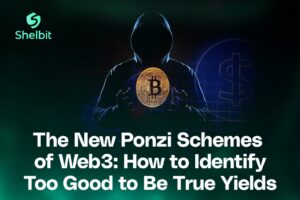
Introduction
Circle, the company behind USD Coin (USDC), has been making bold moves to expand its footprint in the world of tokenized real-world assets (RWA). Its latest decision to expand the $635 million Tokenized U.S. Treasury Fund onto the Solana blockchain has sparked both optimism and caution in the crypto community.
On one hand, it signals confidence in Solana’s ability to handle large-scale financial applications. On the other hand, questions about security, network stability, and regulatory oversight remain. So, the big question: Is Circle’s tokenized fund safe on Solana?
What Circle’s Move Means
Tokenized treasuries are quickly becoming one of the fastest-growing segments in crypto, bridging traditional finance (TradFi) with blockchain technology. By issuing shares of a U.S. Treasury-backed fund on Solana, Circle is aiming to:
- Lower transaction costs.
- Provide near-instant settlement.
- Expand accessibility for institutions and retail investors.
- Strengthen Solana’s role in the RWA narrative.
This expansion comes at a time when the tokenization of treasuries has already surpassed billions in value across multiple chains like Ethereum and Polygon.
Why Solana?
Solana has become known for its high throughput and low fees, making it attractive for applications requiring speed and scale. However, Solana’s history of network outages has often raised red flags. Circle’s choice suggests growing confidence in Solana’s improved stability and its adoption in real-world finance.
The Safety Question
Despite the excitement, security concerns remain front and center:
- Network Reliability Solana’s track record is improving, but outages in the past have hurt trust.
- Smart Contract Risks Any tokenized product relies on the integrity of the code managing assets. Bugs or exploits could threaten investor funds.
- Regulatory Oversight With global regulators scrutinizing stablecoins and tokenized assets, Circle’s move will likely invite more attention from policymakers.
That said, Circle’s reputation as a compliance-first company may give investors more confidence than most players in the space.
What This Means for the Tokenized Asset Market
If successful, Circle’s expansion to Solana could mark a major milestone for tokenized treasuries:
- It could cement Solana as a serious competitor to Ethereum in the RWA space.
- It could accelerate institutional adoption of blockchain-based financial instruments.
- It might encourage other issuers to diversify across chains.
Where Shelbit Fits In
For investors looking to explore tokenized assets beyond Circle, exchanges like Shelbit provide opportunities to diversify crypto portfolios with transparency and security. As RWAs expand, platforms like Shelbit will play a key role in bridging the gap between blockchain innovation and everyday investors.
Conclusion
So, is Circle’s $635M Tokenized Treasury Fund safe on Solana? The answer lies in balancing innovation with risk. Solana offers speed and efficiency, but its history still sparks caution. Circle’s involvement, however, adds credibility and oversight that few others can provide.
For now, it’s a bold step that could accelerate tokenization, strengthen Solana’s standing, and reshape how investors interact with traditional assets in a crypto-native way.



